One of the factors that can complicate the process and effectiveness of covering equipment for transportation and storage is irregular size and/or shape. Tarps may accommodate size but don’t provide formfitting protection. Plastic and shrink wrap can leave gaps allowing scratching, moisture buildup, and wind tunneling.
Through our detailed design and prototyping process, we develop custom-fit protective covers that match the exact dimensions of the equipment they’ll be covering. No matter the size or shape, our personalized designs and extensive customization options ensure the most accurate and secure fit possible. But which options would be best suited for your cover? Our teams are here to help you decide.
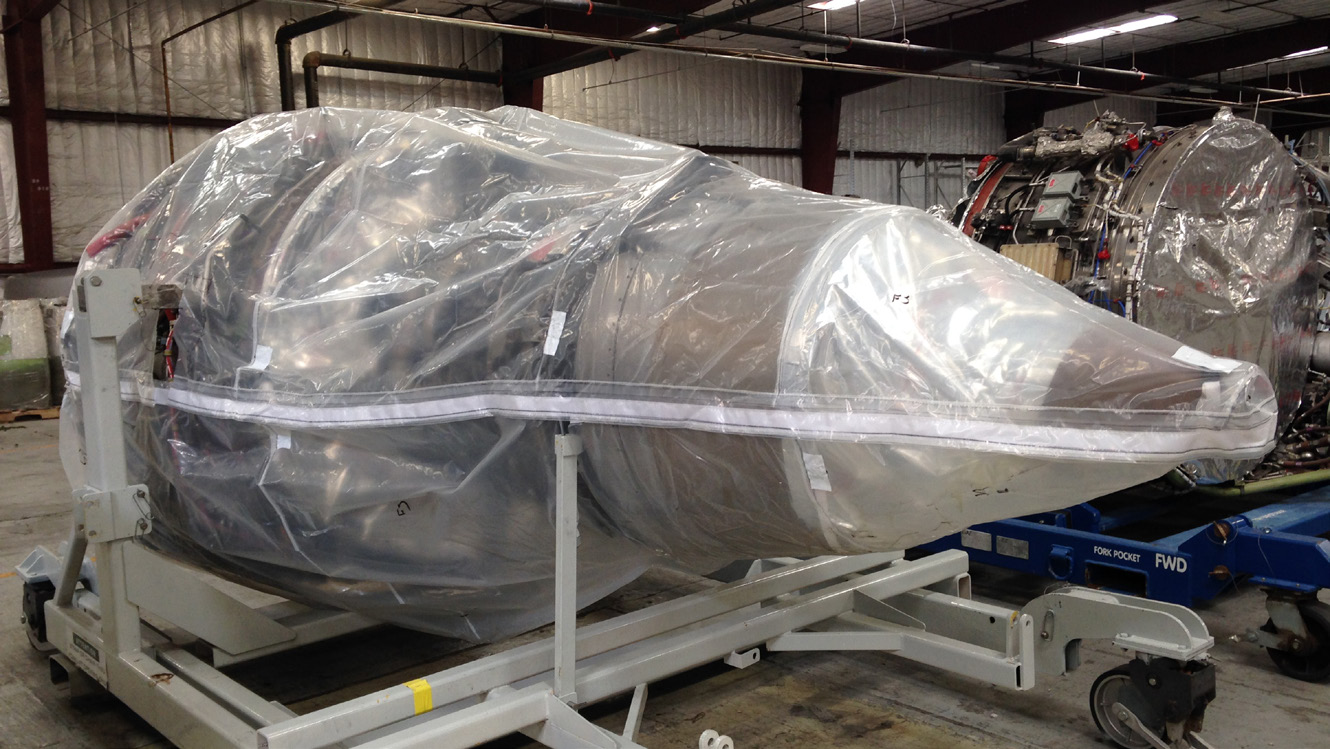
Starting the process: Attaching
Attaching is the addition of a special component to your cover for functional purposes. Ropes, vents, drains, clips, rings, and webbing are just a few examples. There are over 30 attachments in use so far, and we are always looking for other functional components to use.
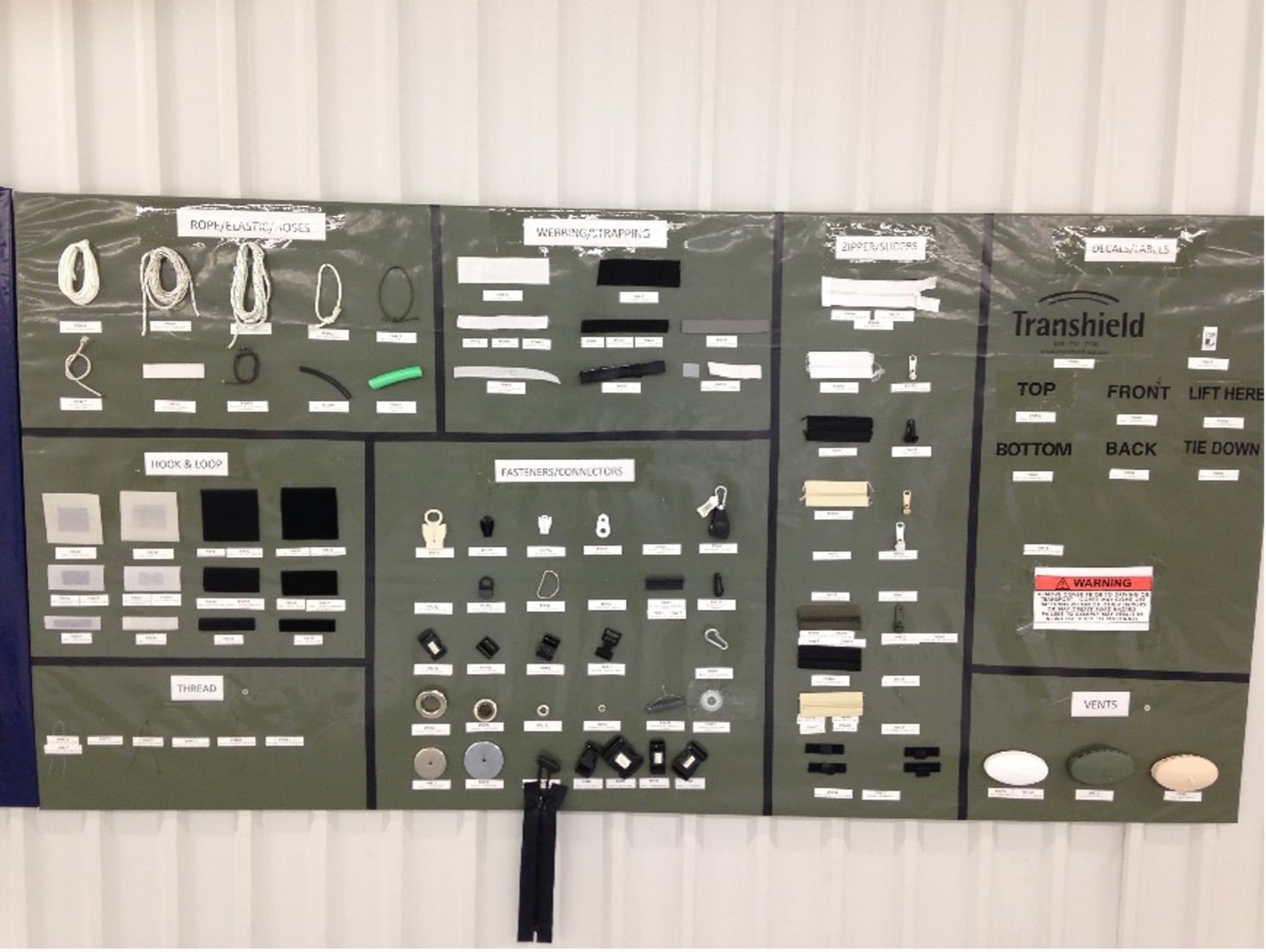
This level of customization is highly situational and can be tailored to meet the detailed needs of your equipment. For protection purposes, the addition of ropes and tie-downs help give a tighter and more secure fit. For the purposes of ventilation, drains and air vents would provide a free-flowing environment for your equipment.
Cutting

Cutting is the beginning of the customization process. Whichever of our fabrics you choose to use will be cut to match the dimensions of your product. Accurately cutting based on the dimensions of your equipment will ensure that any exposed surface area will be protected by material. Transhield’s ability to cut based on specific dimensions means that nearly any size item you may need covered can be fitted.
Sewing or welding
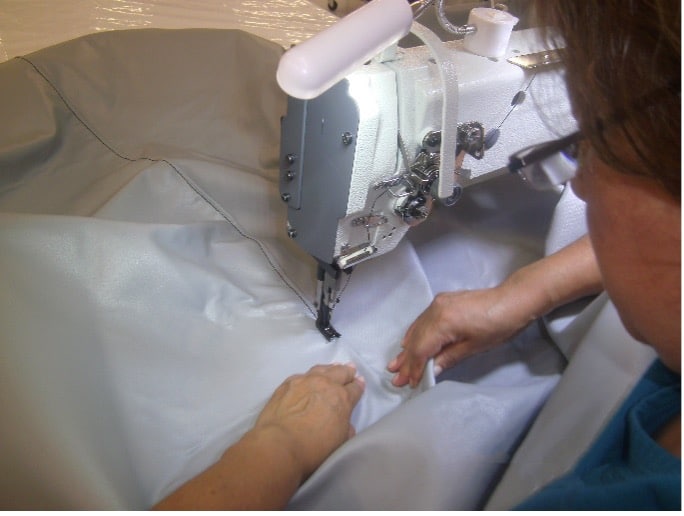
The unifying of all cut fabric into a single cover that will fit your product exactly. Sewing and welding provide the benefit of a strong connection between the different sections of fabric that come together to make one custom-fitting cover. Sewing/welding provides the flexibility for Transhield to make covers in nearly any shape distinction that you may need.
Seams and hems
The seams are the sewn connection point between the custom-cut pieces of fabric that come together to make one single cover. Transhield seams can be machine sewn, heat welded, and sonic welded. The type of seam that is applied to your cover determines the bond strength between the various fabric connection points of your cover. Depending on the use of your cover – for transportation, storage, etc. – we recommend the style of seam that will give maximum strength for intended use.
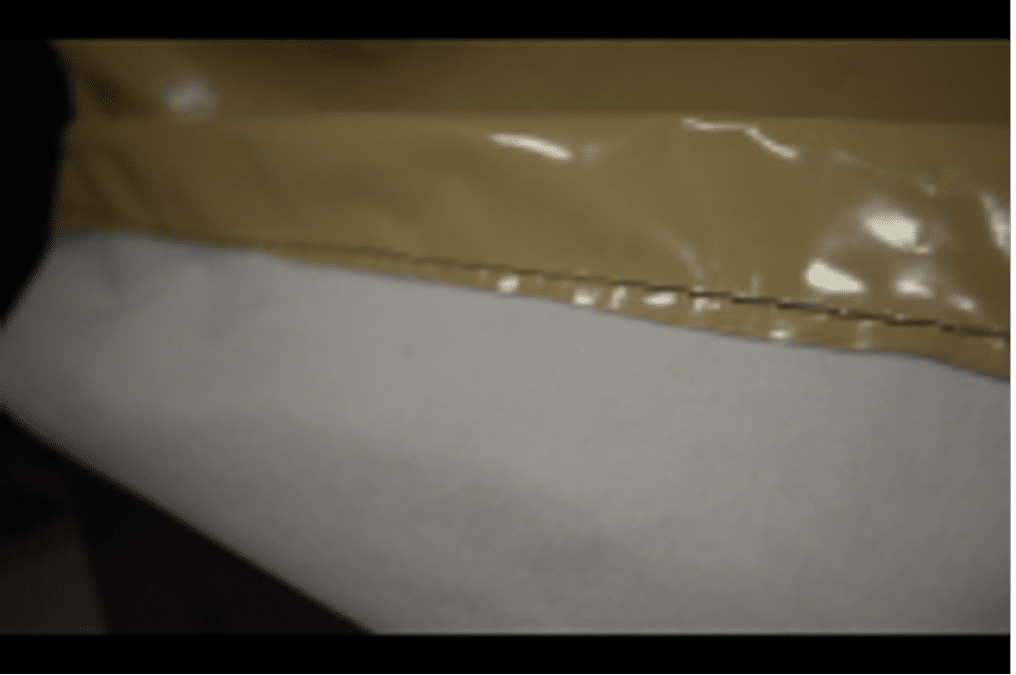
Hemming is the finishing method for the ends of our covers. Hemming prevents the unraveling of the fabric and provides a tight and secure edge to the ends of the cover.
Flaps
Flaps on your cover can come in a variety of shapes and sizes. The purpose of a flap is to give viewing access, or physical access to the inside of the cover. Flaps are secured shut with the use of Velcro strips and can be opened with moderate pulling force.
Depending on your needs, having a flap inserted on your cover can be a huge convenience. It can allow you access to integral parts of your equipment without the need to completely remove and then reinstall a cover. It can also provide viewing access to labels, instructions, etc., that are pasted to your machine
“Moon” – Material Reinforcement

A moon describes a small, half-moon-shaped piece of material that is used to reinforce the different sections of a cover by being sewn on. Typically, moons are added towards the bottom of the cover and on corners. The addition of moons provides reinforcement to pivotal areas of the cover that may otherwise be vulnerable to tearing.
Velcro and taping
Velcro can be added to various parts of the cover to attach cover ends, as a part of an opening in the cover, and many other uses. Having the option to add Velcro to your cover means a number of customization possibilities: detachable/attachable areas, adding open/close access points, attaching document sleeves, etc.
Our Transhield tape, or special scrim component above or beneath the cover’s surface are also available options. Taping is a way to help double-reinforce the cover from tearing or normal wear and tear. The tape can be placed on corners and stress points to make doubly sure that the cover stays secure for as long as you need.
Zippers and ratchets
Zippers are added to our covers for access points as well as for fitting purposes when installing the cover and removing it. Zippers offer a dynamic option as an addition to the cover. Depending on the situation they can be used as an access point to inside the cover, or simply to install and uninstall the cover on your piece of equipment more quickly.
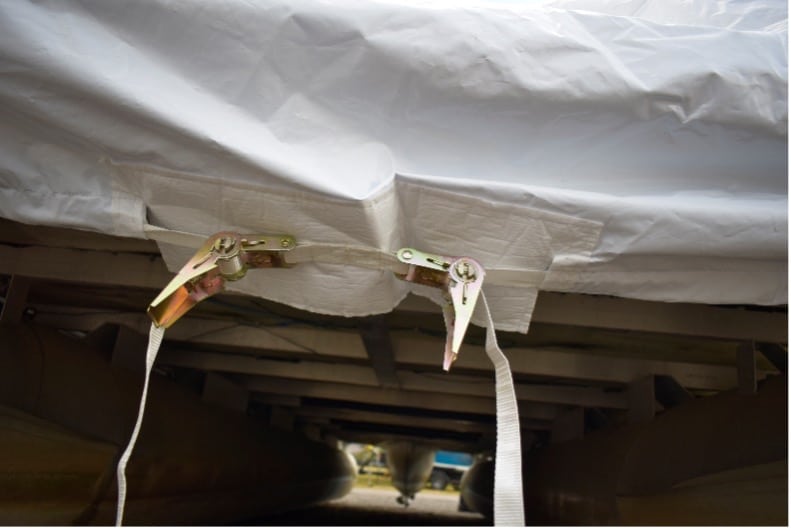
Ratchets are a tool used to secure webbing or other straps on the cover. Ratchets are used typically at the bottom of covers to tighten edges. This is useful because it prevents wind and debris from sneaking into the bottom opening of the cover.
Document pouches and sight windows
A document pouch can be attached to the inside or outside of the cover to hold paper or other small items. This feature allows for easy access to important documents, tools, etc.

A sight window is a clear plastic addition that can be added to various areas of a Transhield cover. This feature allows for easy viewing and inspection of important areas on a piece of equipment while covered.
Perimeter rope, belly bands, and vents
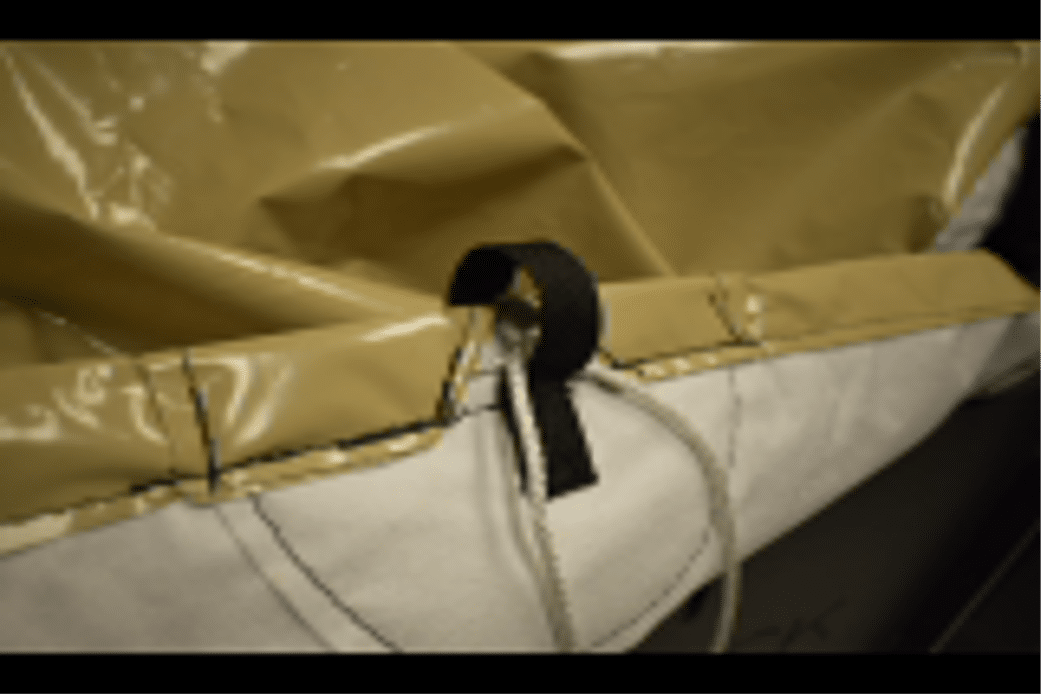
A perimeter rope is a cover addition that is sewn into the hem of our covers and exits at a point along the perimeter of the cover (usually the back). This feature allows users to tighten the fit of their cover and tie it off to secure the fit in place.

Belly bands are usually a rope that is secured in various points along the perimeter of the cover that have a corresponding tie-off point on the opposite side. This feature allows foradditional securing of the cover fit by tying off and tightening the belly bands along the perimeter of the cover.

Small vents can be attached on multiple areas of cover. Vents are crucial to keep the air underneath the cover flowing and free from becoming stale. Vents can also prevent mold and mildew buildup during storage.
Branding

Transhield can place custom logos and messaging on our protective covers. This customization option can provide a branded finish to customers’ protective packaging which can act as a “billboard” of sorts when the cover is going down the road, being stored, etc.
Folding and packing
When the finished product is done, we custom-fold it the way you want the cover to be arranged. There are seven folding options with room for more. It may sound silly, but with how large a custom cover can get, how you fold it for delivery is very important. We fold our covers with the end user in mind, making it a faster process for them to unbox and install the cover.
Depending on the size of the cover we will box it to your liking. How the cover is packed influences the speed at which it can be unboxed and applied to your equipment.
From fabric selection to packing style, our customization process is catered to you. No matter the size or shape of your equipment, our design and production teams are here to help select the perfect customization options to deliver a cover solution that not only fits perfectly, but also provides superior protection against damage risks in transit and in storage.
To find out more about how Transhield can help keep your equipment protected, contact us today.